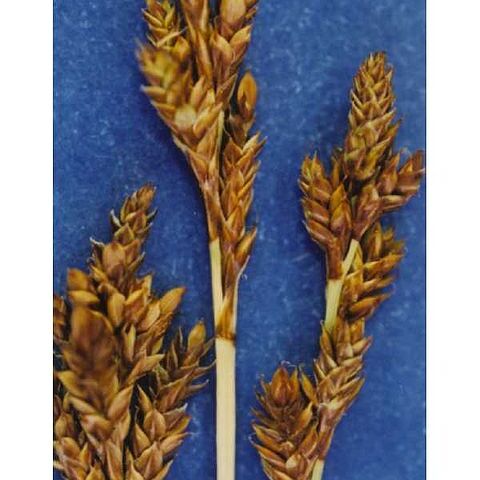Plants densely cespitose, in small clumps; rhizomes short. Culms erect to arching, slender, 15–90 cm. Leaves: sheaths relatively tight, pale to mid brown abaxially, inner band thin and hyaline, often concave at summit; ligules as long as wide; blades green to yellowish green, flat, 10–25(–40) cm × 0.5–2 mm, shorter than culms. Inflorescences erect to somewhat nodding, 1.5–7 cm × 3–6 mm; proximal bracts bristlelike-prolonged, shorter than to exceeding spikes; distal bracts usually scalelike. Spikes 5–10, gynecandrous, proximal ± separate, distal closely approximate, containing 5–10 perigynia, sessile, globose to short-oblong, 3–7 × 3–4 mm; terminal spike staminate for less than 1/2 of length, scarcely clavate. Pistillate scales white-hyaline with green, 3-veined center, often brown tinged, ovate, subequal to, not concealing perigynia, apex obtuse to acute. Perigynia appressed-ascending to loosely spreading at maturity, green or brown, often dark brown in age, lightly several-veined, elliptic-ovate, 2–2.5 × 0.8–1.5 mm, widest near middle, membranous; beak shor, margin serrulate. Achenes pale to mid brown, ovate-orbiculate, 1.25–1.5 × 0.8–1 mm, glossy. 2n = 56.
More
Much like no. 48 [Carex canescens L.]; lvs green, 1–2.5 mm wide; spikes avg smaller, 4–8 mm, brownish, or sometimes pale as in no. 48; perigynia mostly 5–10(–15), a little more spreading, so that the beak-apiculations interrupt the outline of the spike, evidently but rather finely several-nerved dorsally, nerveless or obscurely nerved ventrally, smoother-textured, the wall very thin distally and easily ruptured; dorsal suture well developed, 0.4–0.8 mm, extending onto the distal end of the body, often with a narrow, white-hyaline, overlapping longitudinal flap; 2n=56. Bogs and wet woods; circumboreal, s. to N.J., O., Mich., Minn., and in the mts. to N.C.


